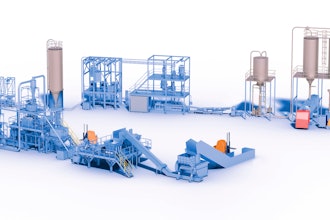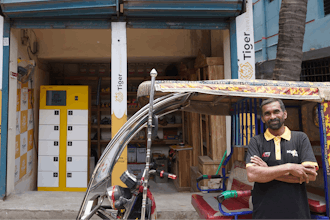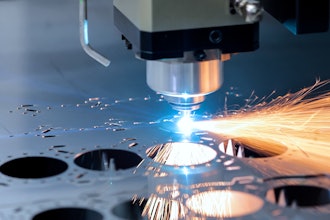
Manufacturers are facing a multitude of challenges that can impact their operations and profitability.
- Workforce challenges, such as a shortage of skilled labor, pose difficulties in maintaining productivity and innovation.
- Environmental regulations and sustainability expectations add complexity and cost.
- Cybersecurity risks are a growing concern as manufacturing processes become more digitized.
- Rising costs of raw materials, energy, and labor impact profitability.
- Regulatory compliance, changing trade policies, and supply chain disruptions further complicate operations.
Manufacturers must navigate these challenges to thrive in a rapidly evolving industry. Technological advancements, including automation and AI, are transforming the industry and helping mitigate these challenges, requiring manufacturers to accelerate digital transformations.
Longer Life Cycles = Less Disruption
Rugged devices such as laptops or tablets, combined with customized software, are essential for manufacturers operating in challenging conditions with high demands from a variety of stakeholders. These devices provide durable and reliable technology that withstand the rigors of industrial settings while meeting the needs of security, cost and usability. By investing in rugged devices, manufacturers experience improved efficiency, enhanced worker safety and reduced downtime.
Downtime in manufacturing can be costly, both financially and in terms of reputation. Any disruption to operations can result in lost revenue, repairs, employee overtime and productivity. A recent study from Siemens cites the cost of unplanned downtime reaching up to $500,000 per hour for manufacturers. In industries like pharmaceuticals and food and beverage, the cost can be even higher. To avoid these costs, manufacturers need reliable and efficient equipment that can keep them up and running.
Rugged devices reduce maintenance and repair costs, lowering the total cost of ownership (TCO) and increasing productivity. These devices are designed to withstand harsh conditions, including extreme hot or cold temperatures, dust, moisture, vibrations and impacts. They are also equipped with protective seals and enclosures to prevent the ingress of dust and moisture. Additionally, their robust construction and shock-absorbing materials enable them to survive impacts and drops, helping minimize downtime and maintenance costs, leading to significant cost savings over time.
Rugged device screens improve touch control (with gloves, a digitizer pen, or a stylus) and provide a display that is highly readable in areas with very different luminosity levels, displaying with better contrast and crisper colors both indoors and outdoors, thus providing excellent visibility in any area of the factory.
Efficiency is another area where rugged devices can help reduce downtime by allowing workers to continue working during power outages or other disruptions. Rugged technology also helps reduce the need for repairs and replacements - saving manufacturers money and keeping production lines running smoothly. They also improve productivity and worker safety by allowing workers to work more efficiently and comfortably in harsh environments.
Energy Savings
To ensure their durability and reliability, rugged devices should meet industry standards such as MIL-STD-810G, IP68, UL/cUL, and ATEX/IECEx. On top of the hardware, software plays a vital role in enhancing the effectiveness of rugged devices in manufacturing settings. It optimizes efficiency and productivity and provides real-time data and insights, enabling informed decision-making and swift responses to changing conditions.
Software also offers detailed analytics on device performance, battery life, and other critical parameters, allowing for proactive maintenance and preventing unexpected failures. Moreover, software can be easily configured to meet specific industry requirements, providing a tailored fit for each manufacturing environment. It also features advanced security measures to protect against cyber threats and ensure data security.
Industrial robotics is a revolution in the manufacturing sector. Robot integration projects are allowing for faster and more efficient manufacturing processes that reduce costs and errors. Getac’s rugged solutions provide a platform for industrial programming and robotic control in manufacturing. Direct connection to shop floor machinery with a device makes industrial programming, direct control of robots, and technical data gathering possible.
Rugged devices should also integrate with enterprise asset management (EAM), computerized maintenance management systems (CMMS), and workforce management systems (WMS), allowing for real-time monitoring and reporting to help track maintenance history, schedule tasks, and manage inventory.
When selecting a rugged device, several factors must be considered. These include size, temperature range, durability, battery life, ease of use, additional features, software compatibility, and industry certifications. By carefully considering these factors and aligning them with manufacturing requirements, manufacturers can select the most suitable rugged device that maximizes efficiency, productivity, and safety in their operations.
Mike McMahon is the president of Getac North America.






















